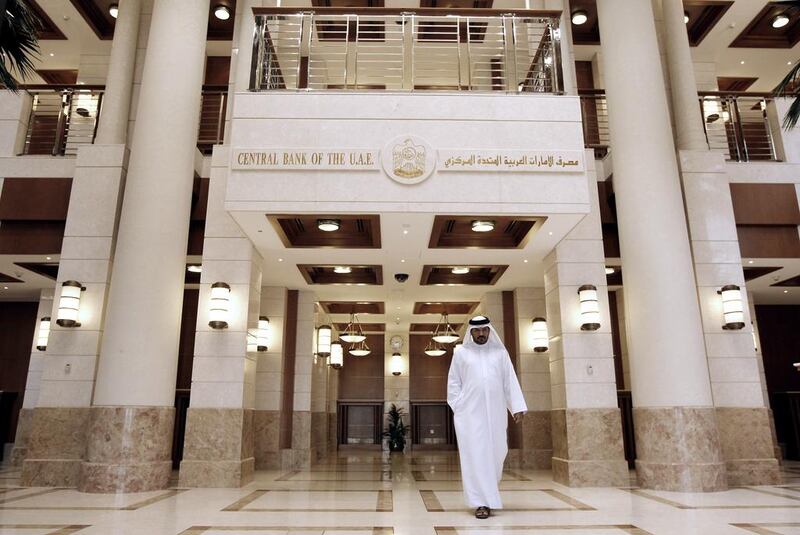As a response to the global financial crisis, the key central banks of the world pumped in over $14 trillion of quantitative easing (QE) to support the financial system and markets.
This excess market liquidity had hugely distorted risk premiums for pretty much all financial assets in recent years, leading to global search for yield as interest rates collapsed to near zero levels.
Fortunately for the GCC, this QE liquidity coincided with the low-oil stress and perhaps paradoxically compressed local credit spreads even as regional economic fundamentals were weakening due to lower oil prices. Now, despite higher prices, a "triple-whammy" of US dollar factors are reducing international investment liquidity which - coupled with the GCC currency pegs - will directly impact funding costs for the region’s governments and corporates. The favourable funding conditions of the past, as above, are beginning to change.
Three factors are driving the change:
The ongoing reduction in US Federal Reserve’s quantitative easing;
The pace of US Fed rate-rises given the strength of the US economy;
The high volume of US Treasury issuances ($2.3 trillion expected) and the short end of the curve to fill the higher than expected fiscal deficits created by tax cuts and higher public spending.
They were well signalled but the third was more unexpected – even prompting the Central Bank governor of India to publicly raise his concerns stating that with the QE unwind “a crisis in the rest of the dollar bond markets is inevitable”.
With short-term rates likely to hit 2.25 to 2.5 per cent by year-end 2018, the increased attractiveness and supply of US credit assets had prompted the first [$6 billion] EM outflow, in 18 months (30 months if we exclude the US Trump election "spike"). As the Fed tightening continues (likely a long process given the uncertainties of QE) expect more widening of EM credit spreads.
One positive for the GCC is that while domestic capital markets are still thin and, crucially, lack a deep institutional investor base - local demand is typically anchored by a GCC base of well capitalised and liquid banks.
The combination of fiscal break-even levels (associated deficits) and sovereign reserves are the two most visible, and specific credit factors that drive sustainable balance sheet strength. Having wisely learnt their lessons from the past, the stronger Arabian Gulf countries had prudently banked much of the oil windfall of the 2010 to 2014 period to collectively build reserves of over $2.5 trillion as of December 2017
_______________
Read more:
Challenging year ahead for global sukuk market
Middle East SWFs hunt returns through private asset classes, Invesco says
_______________
It should be noted all the GCC states benefit from historically stable US dollar currency pegs. Peg pressure has so far been expressed via the FX markets and 12 month forward rates have been particularly volatile over 2016 and 2017 when deficits were at their peak. The recent oil price recovery (in conjunction with support package expected for Bahrain by Kuwait, Saudi Arabia and UAE) will help moderate spread widening and buy time for Bahrain and Oman but given the contagion effect of any devaluation for the entire GCC and the small support amounts needed relative to reserves – support for Bahrain in some form is assured.
There are ongoing long-term structural reforms versus cyclical changes needed to deliver bottom-line economic benefits that in turn should build more resilient credit profiles in the future. These credit factors are based on a subjective view of the goals, pace and progress of these reforms. Objective progress has thus far been slow with no short-cuts; non-oil GDP growth (a key progress metric) has been muted and highlights the reliance of the non-oil economy on oil-dependent public spending.
It should be emphasised that beyond this baseline "noise" and up to a high threshold the region has an almost inverse fiscal relationship with political risk. As it rises, optimism, investment as well as spending/consumption tends to fall, and the regional credit risk premium commensurately climbs.
This climb also supports higher oil prices, which improves government revenues and public-sector finances.
This in turn allow a combination of:
Strengthening of reserve buffers and/or sovereign wealth funds;
More economic investment/stimulus activity (international and/or domestic);
Or reduced deficits.
All positive for risk and ostensibly credit spreads. Indeed, we are already seeing much needed economic stimulus in the UAE and Saudi Arabia, supported by elevated oil prices.
However, despite ongoing, ambitious and challenging reform efforts, oil will remain the key credit driver for the region over the next decade at least. Sovereign reserves should be holistically integrated by investors into sovereign risk assessments, but the lack of transparency can make this a challenging exercise.
Finally, as we have seen already, the end of "easy" EM liquidity will drive more discriminatory spreads pushing up benchmark funding costs, especially for the more pressured governments in the region.
Khalid Ferdous Howladar is managing director of Acreditus, a boutique UAE-based credit and sukuk advisory, which is a member of The Gulf Bond and Sukuk Association.






